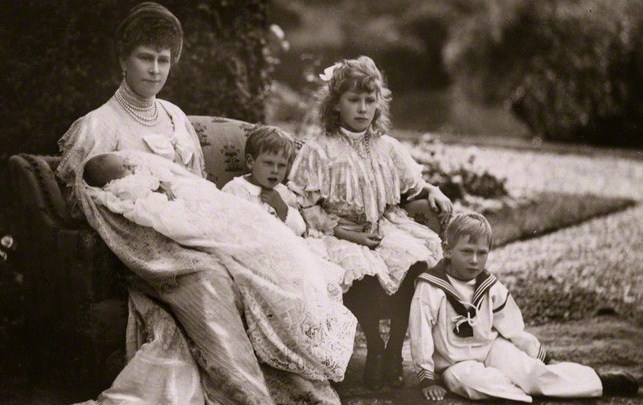
As the long, dry summer of 1905 unfurled across Britain, a prince was born, but his arrival was far from the media event that the arrival of a new royal heralds today. On July 12th 1905, the Princess of Wales gave birth to her sixth child and fifth son. But his arrival was little more than a footnote in the papers of the day.
The baby boy, who would be christened John Charles Francis, would become known to history as ‘the Lost Prince’. The youngest child of King George V and Queen Mary lived much of his short life in seclusion. Prince John had epilepsy which, in the absence of treatments known today, got progressively worse as he got older. His arrival, too, was a quiet moment in royal history.
In some ways, that was inevitable. John was sixth in line to the throne at the time of his birth. His parents were then Prince and Princess of Wales and the main support of the new reign of King Edward VII and Queen Alexandra. They already had four sons and a daughter who had become the modern face of a monarchy reinventing itself after the record breaking reign of Queen Victoria. John arrived in a royal landscape packed with personalities. The birth of a new prince was far from big news.
However, there was another reason the baby’s parents kept their latest arrival low key. Just hours before John was born, an explosion had ripped through a colliery in the Rhondda Valley. On the morning of July 11th 1905, the blast at Wattstown killed 119 people including children and young people working in the mine. Acutely aware of the pain that so many in their principality were suffering, the Wales family kept their personal rejoicing muted. Just days after giving birth, Mary put her name to a statement along with her husband, sending their sympathies and thoughts to those grieving in Wales.
A few weeks later, more brief stories appeared in the press as the baby prince was christened. The Cambria Daily Leader reported that ”the fifth son and the sixth child of the Prince and Princess of Wales received the baptismal names John Charles Francis.”
The Eastern Evening News was more effusive, dedicating a column to the christening which took place under one of the few big rainbursts of the summer. A hastily erected awning covered the path to St. Mary Magdalene with the paper noting gloomily that ”few persons had the temerity to face the unpropitious elements”, adding that the sparseness of the crowd meant those who did come along to cheer the royals got a good view of the baby and his older siblings, three of them dressed in sailor’s outfits.
Prince John of Wales was often seen with his family over the next few years but as his father’s reign began, in 1910, his own health began to cause serious concern. John lived much of his life in the seclusion of Sandringham. He died at Wood Farm on the Norfolk estate in January 1919, aged just 14, after an epileptic fit.
Later generations have named him the ‘Lost Prince’ because of his seclusion which has also led to criticism of the Royal Family for coldness. However, there were few treatments for epilepsy at the time with the best medical advice focusing on quiet surroundings in the countryside. Furthermore, King George had been a long time supporter of organisations helping those with the condition. And there was little doubt that both he and Queen Mary were devastated by the loss of their youngest son.
Prince John’s birth had brought them great joy, even if royal baby mania of 1905 was much more muted for very serious reasons.

